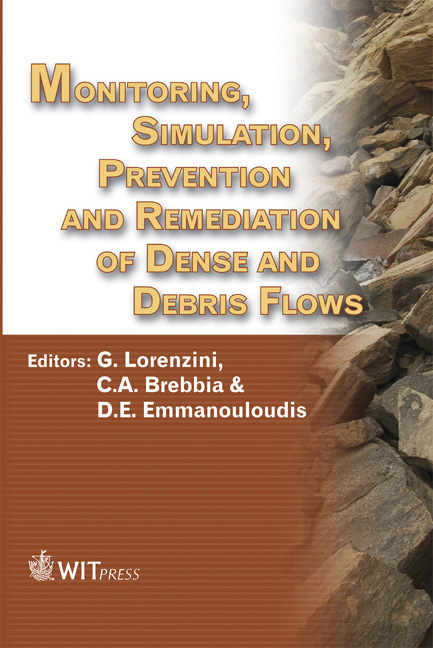Using In-situ Radionuclides To Model Sediment Transfer At The Flow Event Time Scale
Price
Free (open access)
Transaction
Volume
90
Pages
10
Published
2006
Size
666 kb
Paper DOI
10.2495/DEB060121
Copyright
WIT Press
Author(s)
P. Laguionie, A. Crave, P. Bonté & I. Lefèvre
Abstract
Sediment flow modeling over geological time scales requires a good understanding of the sediment transport modes occurring in rivers. Mean sediment residence time within hydraulic networks in response to flow events needs to be determined. In this background, the fallout natural environment radionuclide beryllium-7 ( 7 Be, half-life of 53.3 days) and the in-situ artificial radionuclide iodine-131 ( 131 I, half-life of 8.05 days) provide reliable tools to better understand the sediment transfer at the flow event time scale. Our model is based on the radioactive decay of the 7 Be and 131 I associated with suspended sediments. The short half-lives of 7 Be and 131 I allow phenomena to be studied at the flow event time scale. In this context radionuclide inputs have to be well-identified. The artificial iodine 131 I source is well-defined as this radionuclide most likely originates from hospitals where it is used in radiotherapy. In the case of 7 Be, the possibility that cities are radionuclide traps as they may provide high radionuclide concentration to channels, at time t, compared with bank inputs, is discussed. Natural environment radionuclide potentiality to estimate mean sediment residence time in a river section is demonstrated from in-situ data. Keywords: in-situ radionuclides, short-time scales, sediments, transfer model. 1 Introduction Sediment transfer models in river usually consider a relief at the equilibrium state, whereas they are established from local erosion-sedimentation processes involved at short time scales. Thus, it is of primary importance to determine the
Keywords
in-situ radionuclides, short-time scales, sediments, transfer model.





